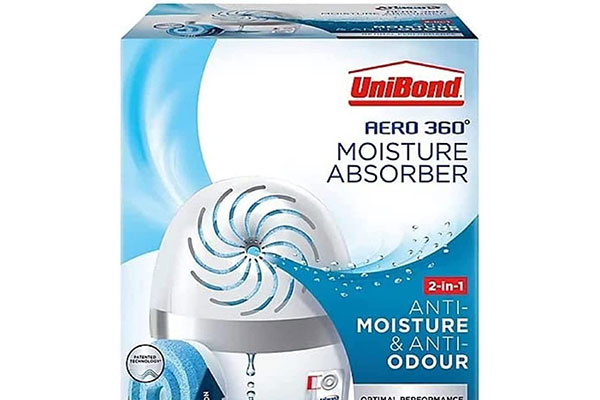If your loft suffers from condensation, it will probably be poorly insulated. Lofts tend to develop condensation problems more often than any other room in the house.
Many people store things in the loft that they don’t use very often, or need to keep safe, such as paperwork, camping equipment, old clothes, books, and toys and games that the children have grown out of. Loft condensation can cause all sorts of problems with dampness, mould and mildew that could negatively affect anything you keep stored away in your loft space.
Here we look at some valuable methods for eliminating loft condensation so you can feel confident about the health of your loft space and anything you choose to store there.
1) Increase loft insulation
Adding more loft insulation can help retain the home’s warm air rather than being lost to the loft space. As well as adding extra loft insulation, you could look at insulating any external loft walls, which tend to be colder than internal walls and cause more condensation build up in your loft.

Non Allergy Loft Thermal Construction Insulation Roll
Recycled polyester which can be doubled up to make around 220 mm of thickness.
2) Reduce humidity levels
An excellent way to reduce loft condensation is to reduce the overall air humidity level in the home. Sources of moist air in the home include poor ventilation in the bathroom, drying laundry indoors during the winter, ventless gas heaters and wet winter coats and boots air-drying in the hallway.
Replacing ventless heaters with vented ones and running a dehumidifier in the home can be effective ways to reduce air moisture levels in your home. If you have no other choice but to dry wet clothes indoors, choose a dehumidifier with a laundry setting for an effective way to quickly dry your clothes without creating condensation issues in your loft.
3) Seal wall and roof joint cracks
If your loft has any cracks or gaps where damp air or rain can enter, then sealing these cracks can keep wet air and water ingress from rain and snow at bay. Cracks in your loft walls or gaps in your roof joints also create a convection current that draws humid air up from the home into the loft space. By sealing up any cracks, you can eliminate this air exchange and help retain warm air in the house.
4) Increase loft ventilation
Proper loft ventilation is key to keeping condensation levels down. When you have good loft insulation that will help to reduce or prevent the loss of warm air from the home into the loft, you will still need a healthy convection current in the loft to keep the air circulating. Felt Lap Vents are an inexpensive way to prevent loft condensation. These vents easily fit the slots between the felt laps and can be installed from inside your loft. Simply fit the vents into place with the included clips, and they will provide 3000mm² air flow per unit. They will eliminate the problem of condensation build-up in a loft with a lapped felt/membrane construction.

Felt Lap Vents (pack of 10)
Fits between the felt laps.
5) Prevent over-filling your loft space
A common cause of loft condensation is poor air circulation and ventilation due to the loft space being overcrowded with stored items. Many older houses in the UK were built with minimal tile vents or even no ventilation at all. Stacking boxes of possessions in the loft can obstruct any loft vents, which will reduce or prevent healthy air circulation. This can cause condensation, mould and damp build-up.
6) Hot water tanks
Many UK homes keep hot water tanks in the loft. As long as the tanks are well insulated and in good working order, this shouldn’t cause a problem. However, if a tank has a poorly sealed lid or the lid has come off completely, the steam generated by the hot water will be released into the loft, causing condensation. It is worth checking your tank regularly, particularly before the colder winter months when condensation issues worsen.
7) Use dehumidifier
Using a dehumidifier to help combat the humidity in a loft can be an effective way to improve air quality and reduce the potential for mold and mildew growth. By running a dehumidifier, you can reduce the relative humidity of your loft by 30-50%, or even more if needed. The ideal humidity should not exceed 60%, so aim to stay below that. You should also make sure to check the humidity level of the room regularly and adjust the dehumidifier settings accordingly. Additionally, be sure to empty out any condensation trays or buckets regularly so that your device runs properly. With proper use of a dehumidifier, you can dramatically improve the air quality of your loft space. We cover the topic widely here.
What causes loft condensation?
Loft condensation can be reduced to a level where it isn’t particularly harmful by following the few simple DIY tips mentioned above. However, if left unaddressed, excessive condensation in the loft can lead to more severe issues, such as wet rot, dry rot and black spot mould.
Condensation occurs in the loft when warm, moist air contained in the home rises and meets the cold surfaces in the loft. Microscopic water droplets condense and form larger droplets that can run off and pool, causing issues such as mould, mildew and damp patches.
Loft condensation FAQs
What are the most effective ways to stop condensation build-up in my loft?
Ensuring your loft is effectively ventilated to allow damp air to disperse outside instead of condensing on cold loft surfaces is essential. You can do this by ensuring existing ventilation slots in the loft are unobstructed by household clutter and installing additional roof Felt Lap Vents to eliminate the problem of condensation build-up in a loft with a lapped felt/membrane construction.
How can I reduce the humidity levels in my loft?
Addressing the level of damp and humid air you release in your home will help reduce the level of condensation build-up in your loft space. Warm air from your home will always rise, so when it reaches the cooler air of your loft space, it will create condensation on the cold surfaces of your loft. Running a dehumidifier in your home is an effective way to reduce moisture levels in the air, and therefore preventing condensation build up in the loft.
What else can I do to reduce condensation in my loft?
One of the main ways humid air reaches your loft space is through your loft hatch. It is worth checking the condition of your loft hatch because if it is uninsulated, damaged or poorly fitted, it will allow humid air from below to seep into your loft. Insulating or completely replacing your loft hatch can help prevent warm, moist air from your home from hitting the cold inner surfaces of your loft space.
Last update on 2025-02-28 / Affiliate links / Images from Amazon Product Advertising API







